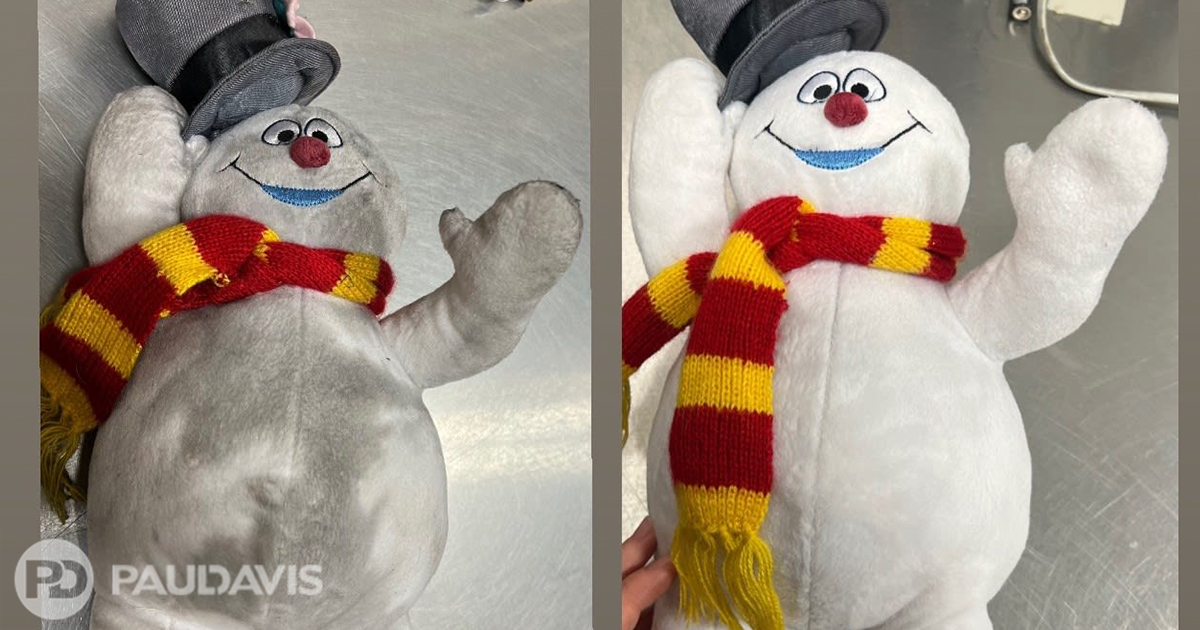
Ask people what they would grab if escaping a flood and many reveal sentimental sides. “I would not leave without rescuing my grandfather’s bag of silver coins/the Andrew Wyeth painting my mother gave me/my father’s World War II military uniform/my son’s favorite stuffed animal,” they answer.
Unfortunately, flood waters can rise in minutes and soak priceless items. “These are the possessions that people are most distraught about because they are irreplaceable,” says Joel Moss, President of Paul Davis of Santa Clarita, California, whose team has been very busy with the state’s atmospheric river inundations. “Our contents restoration experts are particularly skilled with several categories of special items: art, fabric and books.
Real item restored by Paul Davis: a pair of 2,000-year-old Han Dynasty vases
Art: Art restorers handling water-damaged artworks encounter particularly challenging degradation. When oil paintings are exposed to moisture, for example, each paint layer may expand and contract individually depending on the chemical composition of each paint color. Ceramics soak up water like a sponge, for instance. In sum, rescuing priceless works after floods is a specialized process that requires extensive experience and knowledge.
Paul Davis draws on its group of trusted independent art restoration experts. “We rely on the same specialists repeatedly because we’re very familiar with their capabilities and retain their services on many restorations,” says Moss, adding that Paul Davis works with insurance companies as well to assess value, costs and labor needed to restore art pieces. “Often local art restorers are highly skilled, economical and faster than hiring distant experts.”
Real item restored by Paul Davis: a retired first responder’s fire department uniform
Fabric, clothing, upholstery: Because floodwaters are often contaminated, technicians employ a variety of techniques to dry, remove soil and prevent microbial growth in textiles. Methods may include ultrasonic cleaning, which harnesses bubbles produced by sound waves, or pressurized vapor. High-tech cleaning agents, such as degreasers, brighteners, solvents, anti-mildew agents, disinfectants and detergents, are applied in combination with familiar deodorizing substances like baking soda. Clothing and furniture often require multiple treatments over a number of days in prescribed combinations. Special items – leather, vinyl, metallized fabrics - may benefit from handwashing, water vapour treatments and gentle agitation.
Real item restored by Paul Davis: a fragile 1832 German edition of the bible
Books, paper and photographs: For book restoration, technicians may blot, remove dirt, separate covers and pages with wax paper and then place in a very low temperature freezer – spine down - to prevent mould, halt ink degradation and promote a freeze-drying process. Photos are often rinsed in cool, clean water while drying occurs by air or freeze-drying, never by blotting. Until the photos are completely dry, physical contact with the waterlogged emulsion layer can cause irreparable damage.
“We usually return items looking better than they did prior to the disaster,” Moss says. “And if we can’t, we may get creative. We made a shelf from some special flooring that had to be ripped out and discarded after a flood. The homeowners were surprised and delighted.”
